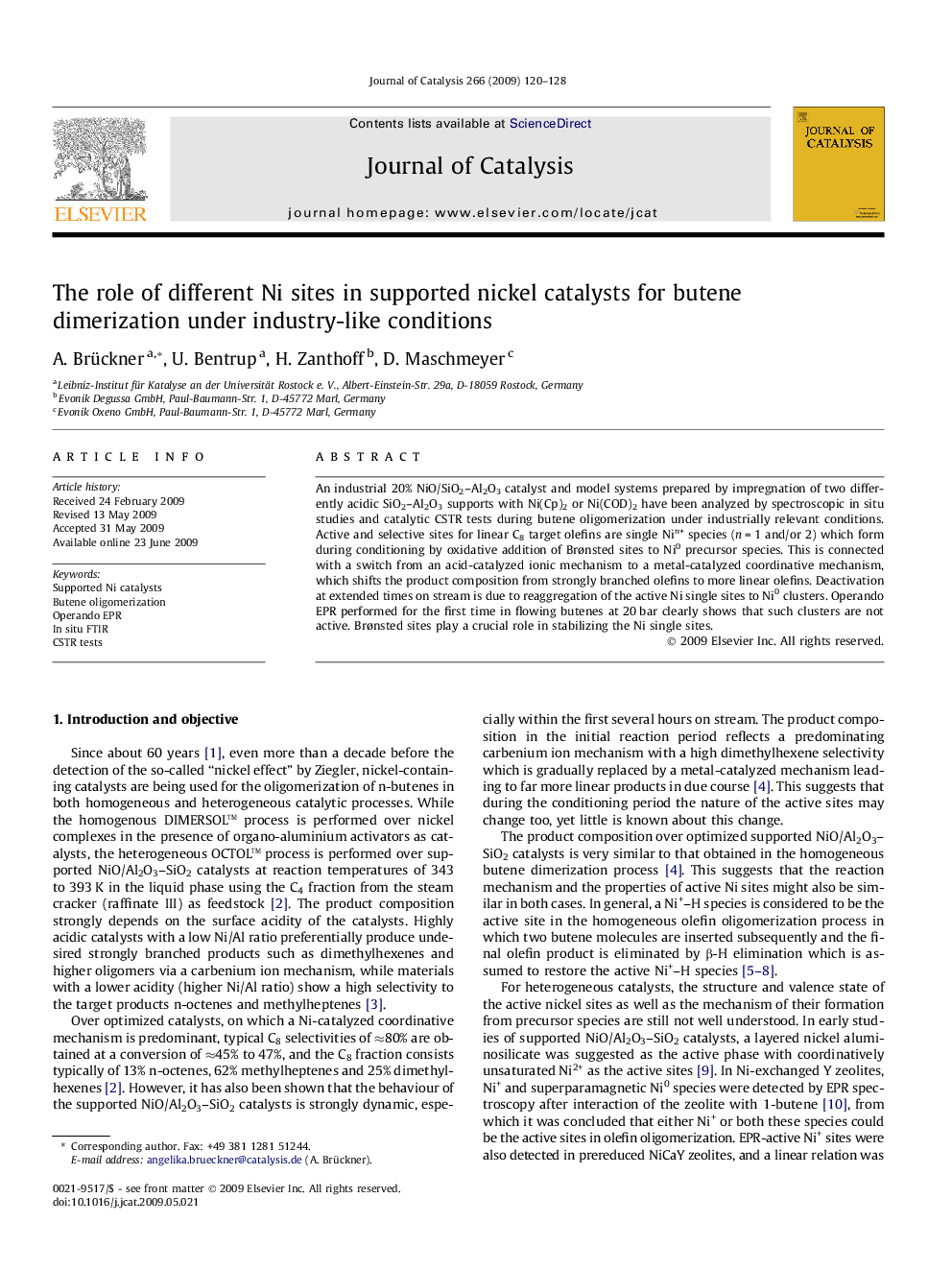| کد مقاله | کد نشریه | سال انتشار | مقاله انگلیسی | نسخه تمام متن |
|---|---|---|---|---|
| 62107 | 47621 | 2009 | 9 صفحه PDF | دانلود رایگان |

An industrial 20% NiO/SiO2–Al2O3 catalyst and model systems prepared by impregnation of two differently acidic SiO2–Al2O3 supports with Ni(Cp)2 or Ni(COD)2 have been analyzed by spectroscopic in situ studies and catalytic CSTR tests during butene oligomerization under industrially relevant conditions. Active and selective sites for linear C8 target olefins are single Nin+ species (n = 1 and/or 2) which form during conditioning by oxidative addition of Brønsted sites to Ni0 precursor species. This is connected with a switch from an acid-catalyzed ionic mechanism to a metal-catalyzed coordinative mechanism, which shifts the product composition from strongly branched olefins to more linear olefins. Deactivation at extended times on stream is due to reaggregation of the active Ni single sites to Ni0 clusters. Operando EPR performed for the first time in flowing butenes at 20 bar clearly shows that such clusters are not active. Brønsted sites play a crucial role in stabilizing the Ni single sites.
Active sites for butene dimerization are single Nin+ (n = 1 and/or 2) moieties which are formed by oxidative addition of Brønsted sites to Ni0 precursor species during conditioning and destroyed by reaggregation to Ni0 clusters during deactivation. Octene is formed by subsequent insertion of butene into the Ni–H bond followed by β-H elimination.Figure optionsDownload high-quality image (46 K)Download as PowerPoint slide
Journal: Journal of Catalysis - Volume 266, Issue 1, 15 August 2009, Pages 120–128